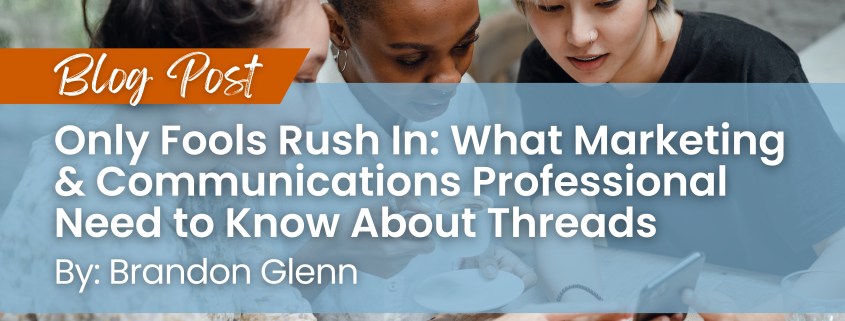Now that it looks like the much-anticipated but always-farfetched Elon Musk vs. Mark Zuckerberg cage fight is unlikely to happen, we’ll all have to settle for X vs. Threads.
By now, we all know that Threads is Meta’s answer to Musk’s struggling X (formerly Twitter), which continues to deteriorate amid plunging advertising revenue and rising hate speech. Threads holds the record for fastest-growing consumer app, jumping from zero to 100 million users in less than a week after its launch in early July.
Threads was billed as a kinder and gentler version than X, or “Twitter without the rough edges or news,” as The Guardian phrased it.
As a quick primer, here are some of the basic facts about Threads:
- Users log in to Threads using their Instagram credentials and can port over their entire profiles. No Instagram? Then no Threads.
- After creating a Threads account, users are free to delete it. But doing so also deletes the corresponding Instagram account.
- Threads can be used only via the mobile app, but a desktop version is reportedly on the way at some point.
- Threads’ feed is algorithmically organized – not chronologically, as X is.
- Posts can be up to 500 characters and can include photos or videos that last five minutes.
- Threads has no search functionality, hashtags, or advertising.
- It is not available in the European Union due to regulatory concerns.
The waiting is the hardest part
Unfortunately for Meta, what appeared to be an early success story has now crashed down to reality. Following its peak in the days after launch, Threads saw its number of daily users plummet 79% globally in just a month, according to Similarweb. Relatedly, the average amount of time users spent on the app dropped precipitously, from 14 minutes per day down to 3 over the course of just a month.
These early returns don’t mean that Threads is doomed to fail; just that it’s having significant growing pains after dreams of its overnight success proved to be wildly optimistic.
So, with the Threads hype, followed by its near-inevitable crash back to Earth, what is a diligent and curious marketing and communications professional to do? In short, watch and wait.
It is advisable to secure desired usernames while they’re available, but business-to-business companies should not feel compelled to rush in at this early stage to “join the conversation,” especially since the conversation seems to be dwindling. Instead, marcomm professionals can prepare today for a possibly-more-relevant Threads tomorrow by seeking out answers to the following three key questions:
- Is our target audience here? Admittedly, without search functionality, this one is tough to answer. However, for most business-to-business companies, the answer is likely to be “not yet,” and quite possibly, “never.”
- Is it worth the effort? Evaluate the time and resources that Threads would require and consider whether they would be more efficiently directed elsewhere.
- What’s the strategy? Due to the differing natures of the two social networks, posts to Threads should not be mirror images of posts to X. Experts advise producing humanizing content that shouldn’t be only brand-focused.
While Threads may hold some promise in the future for marketing and communications, companies should not feel obligated to jump on the platform simply because it’s the latest shiny object to briefly attract public attention. As Amendola Jodi Amendola shared last year, the PR landscape continues to evolve, so it’s best to take a cautious approach, monitor your competitors’ social activities, and keep an open mind.
While this approach may lack the excitement of a bloody battle between two petty, infantile, and thin-skinned ultra-billionaires, it’s what makes the most sense for public relations professionals as Threads seeks to gain traction with a business audience.
